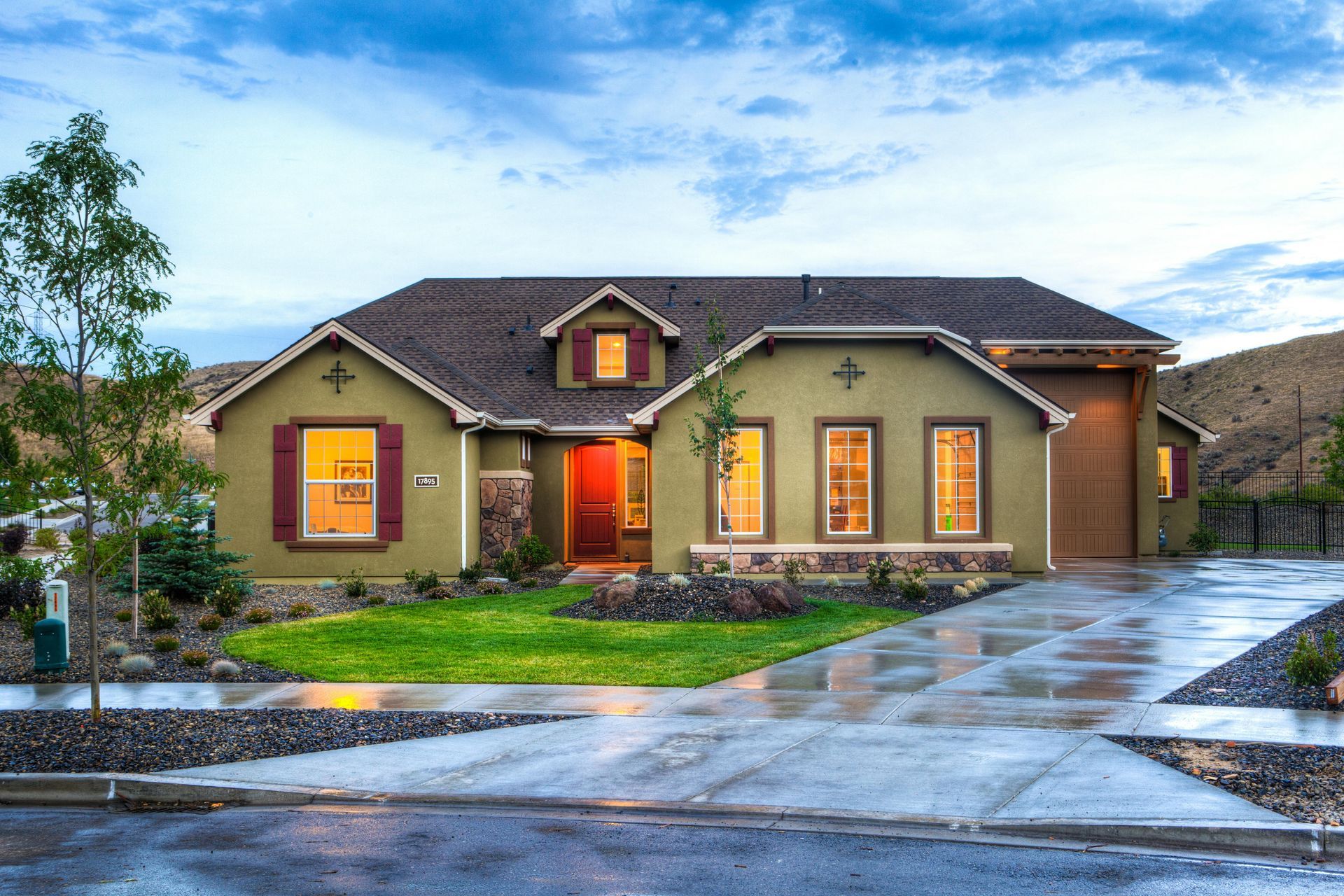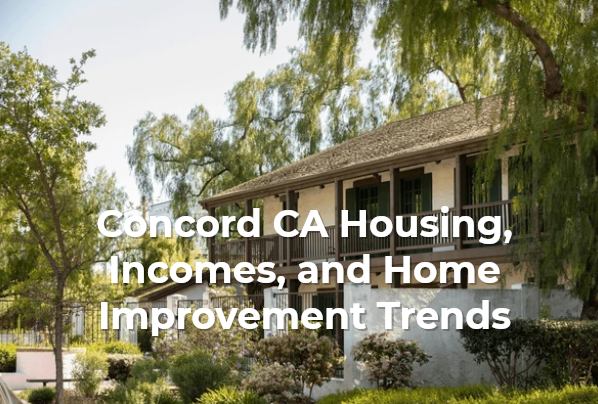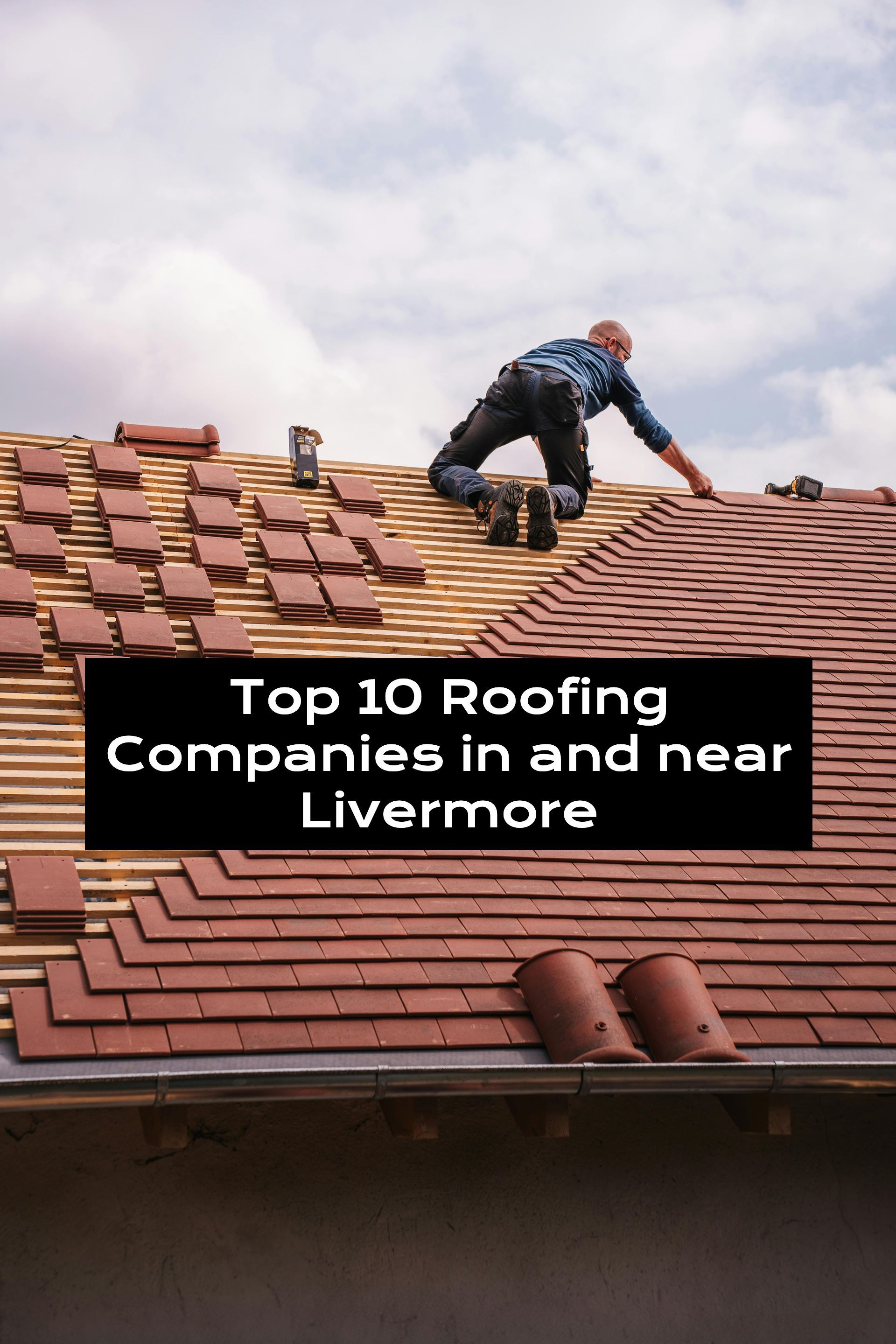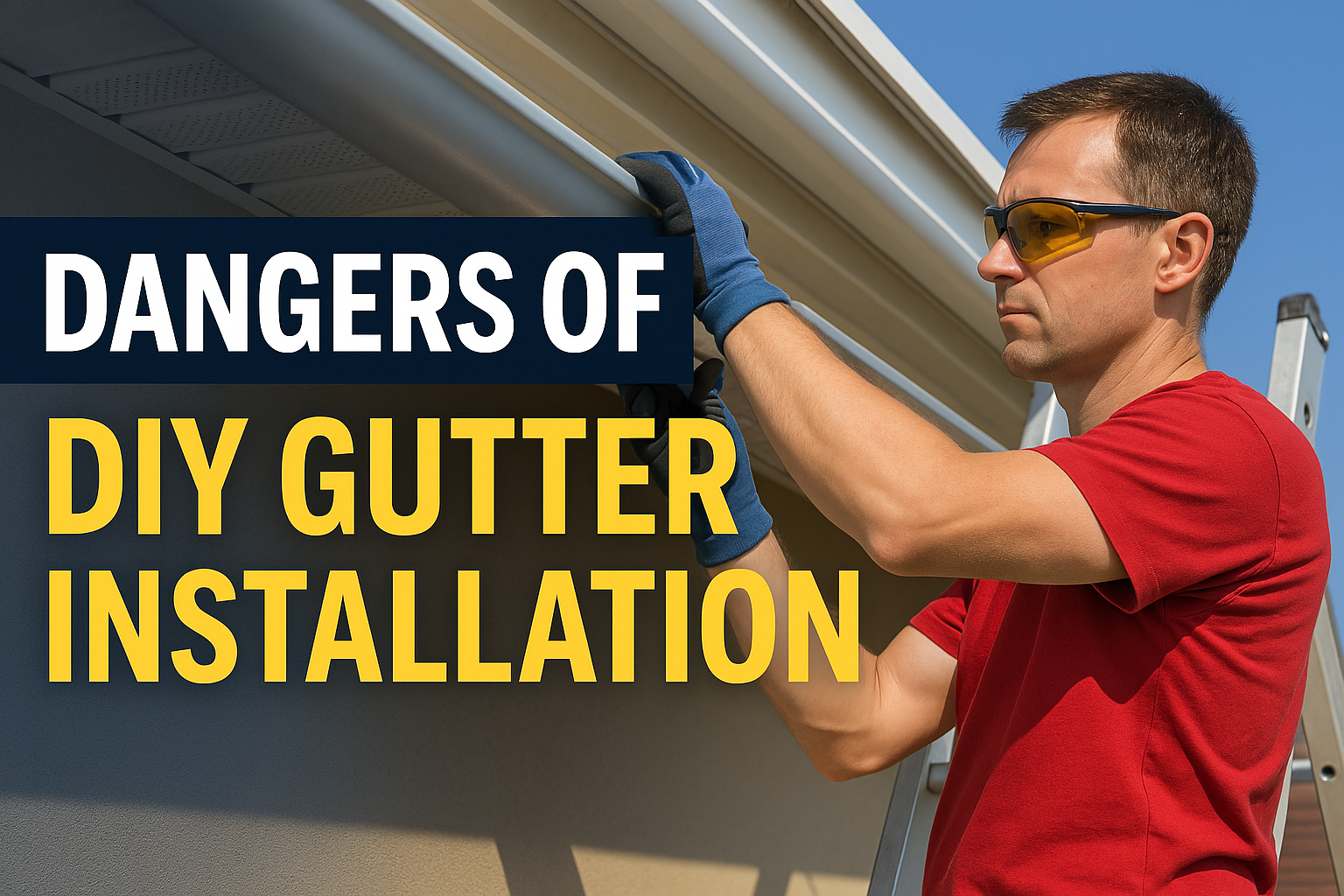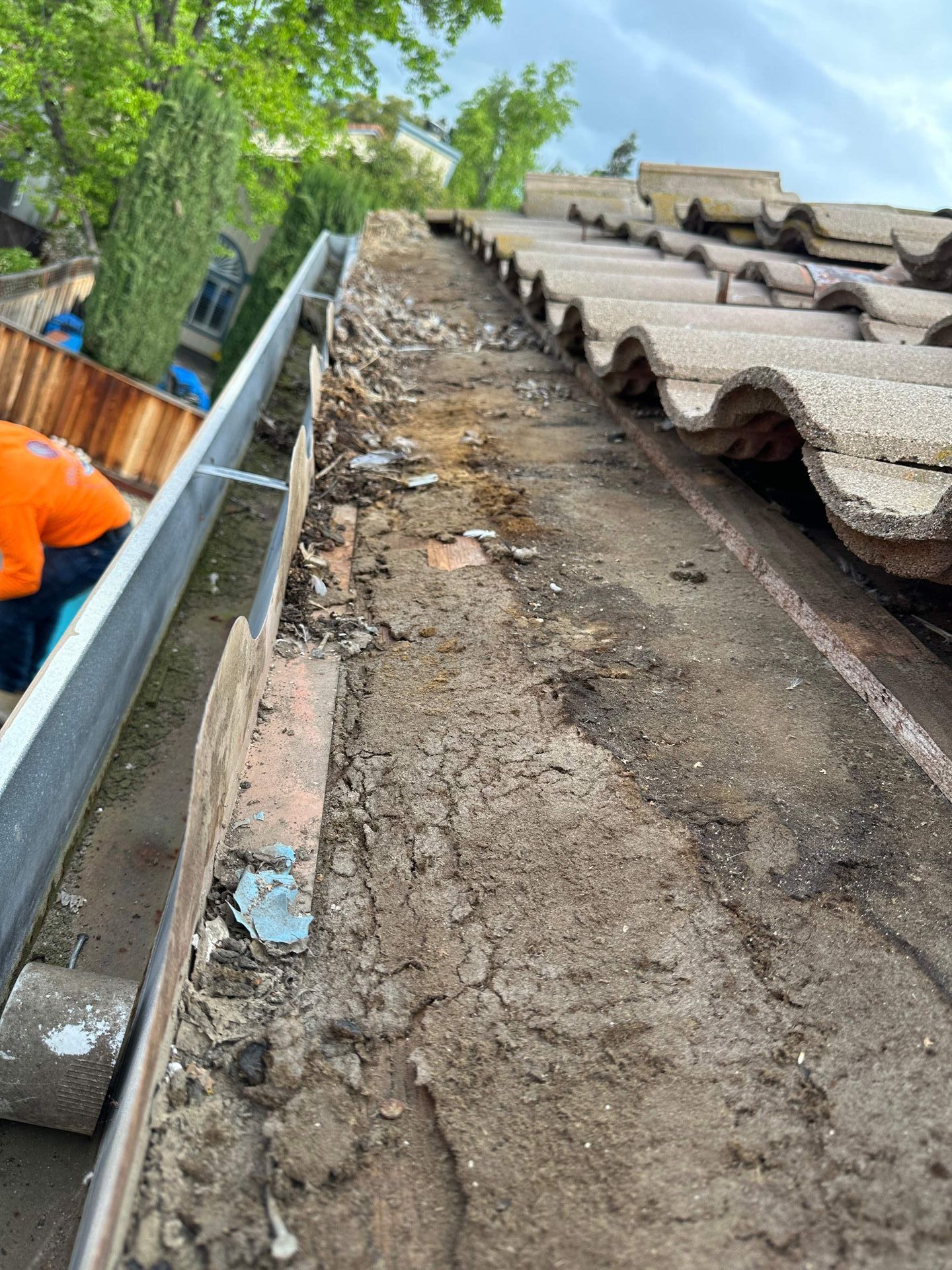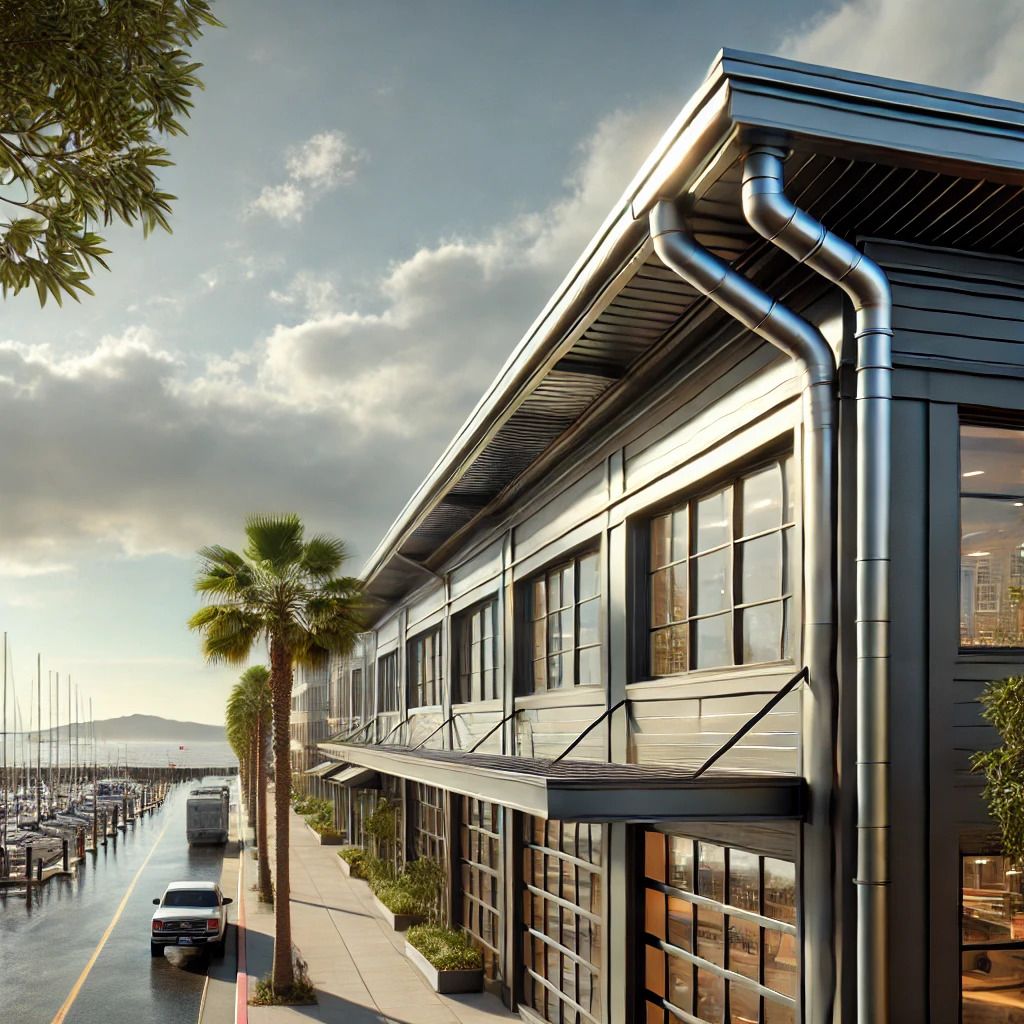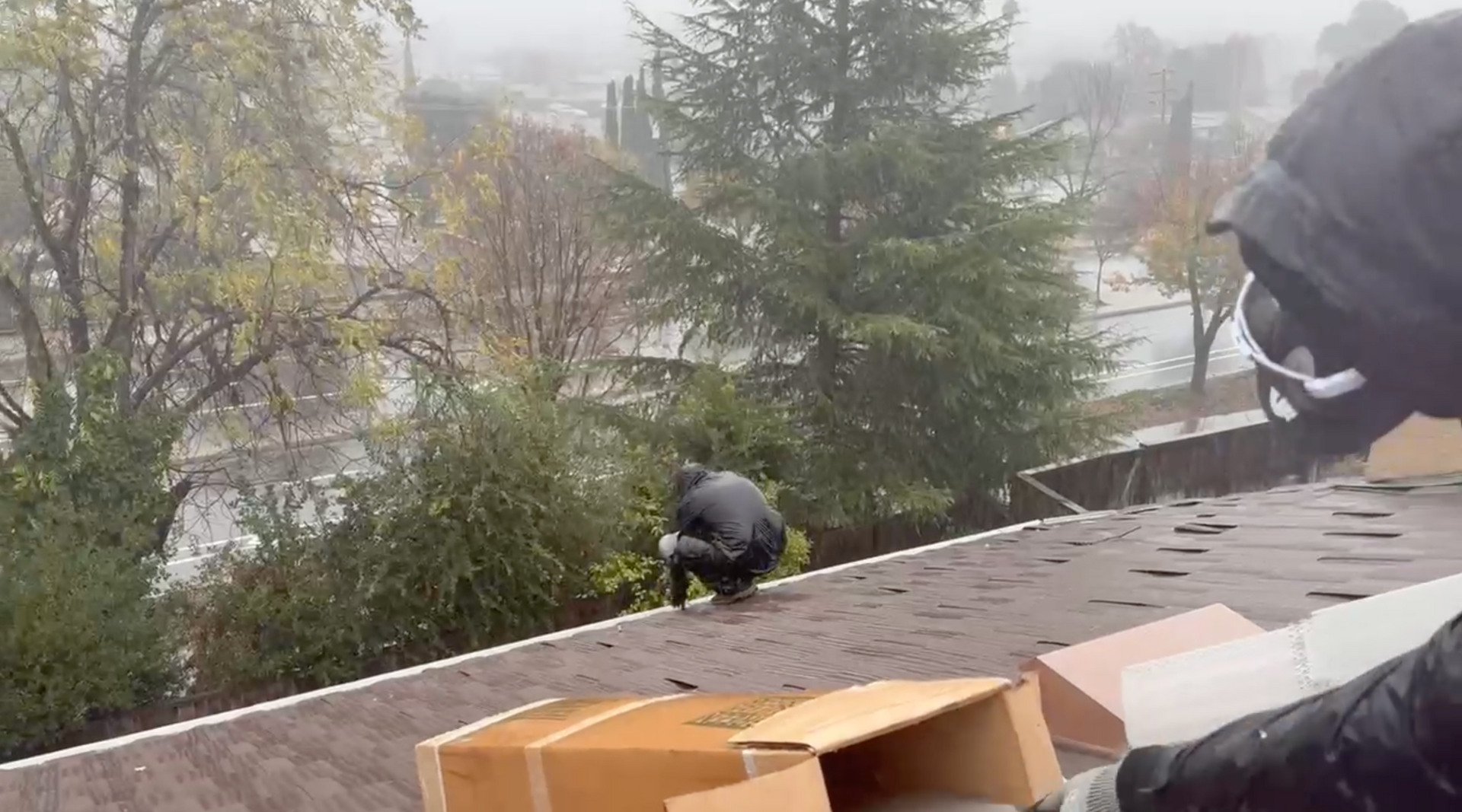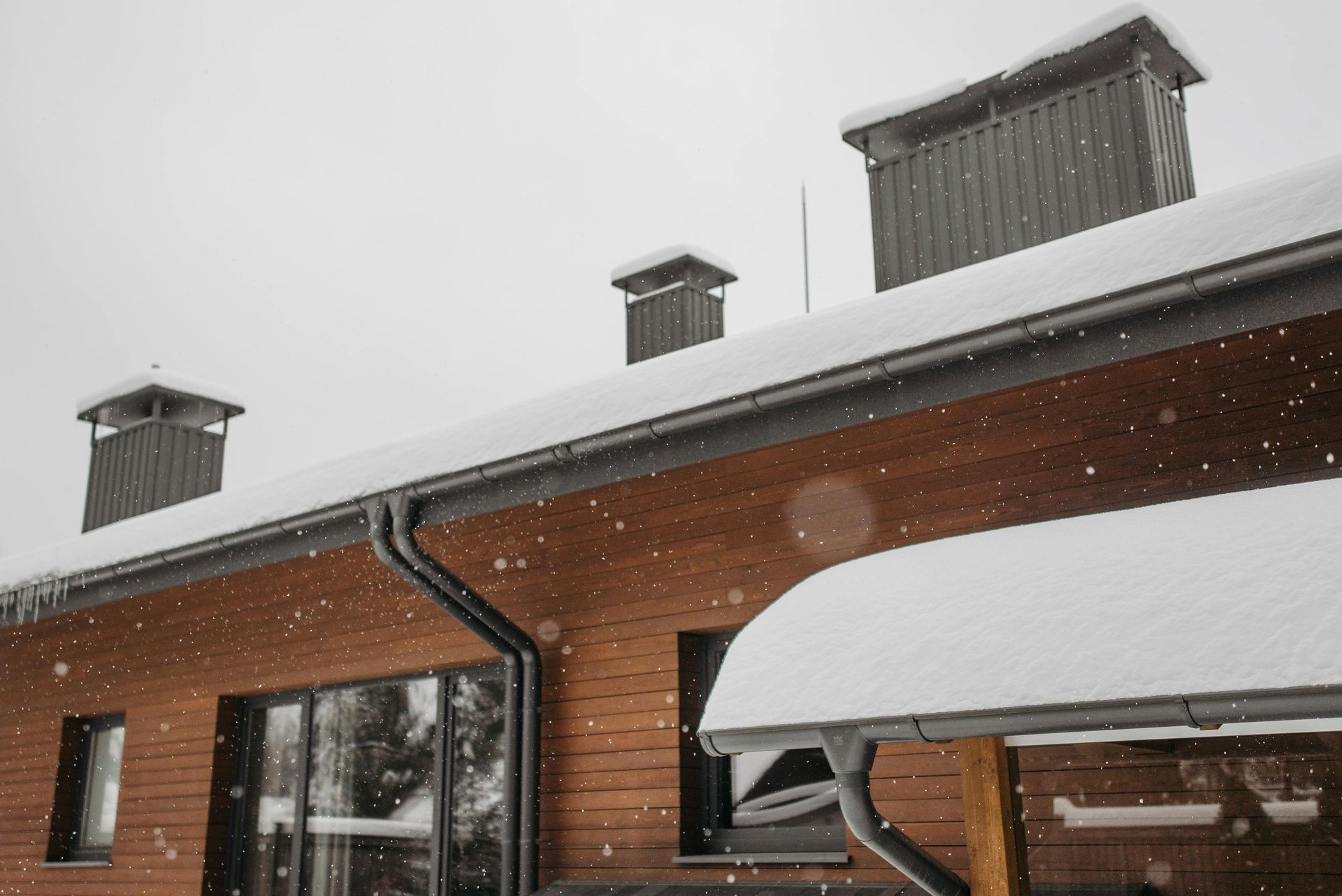Why you should never choose Vinyl Gutters
If you’ve ever wandered the aisles of a big‑box store and wondered why vinyl (PVC) gutters are so cheap compared with aluminum or copper, you’re not alone. At first glance, the low price tag and DIY‑friendly installation look like a bargain, but for homeowners in the East Bay (Alameda and Contra Costa counties), that “bargain” can quickly turn into a headache.
While we’ve been installing, removing, and upgrading gutter systems for 30+ years, you’ll find that we referenced other reputable gutter and home improvement companies in our findings and analysis below.
Let’s talk about why vinyl gutters don’t belong on Bay Area homes and what you should choose instead.
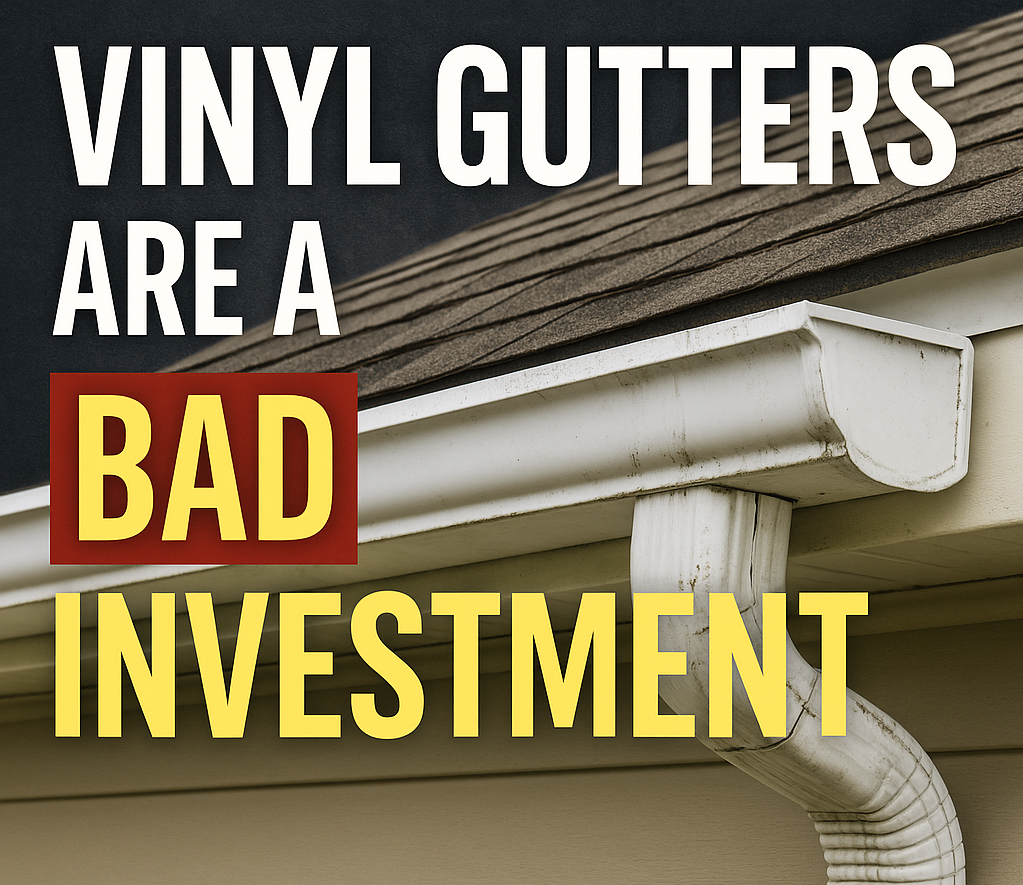
What Are Vinyl Gutters?
Vinyl gutters are made from polyvinyl chloride (PVC). They’re lightweight, available in a range of colors, and cost roughly \$3–6 per linear foot[1]. Because the pieces snap together, they seem DIY-friendly—no welding or painting needed. For short-term fixes or shed additions, they might be a good option.
But the East Bay isn’t a mild‑climate suburb. We get seasonal rainstorms (Berkeley averages 3–5 inches of rain per month between November and March[2][3]), hot, dry summers, salty onshore breezes, and wildfire risk. The same qualities that make vinyl gutters cheap also make them vulnerable in this environment.
The Ugly Truth About Vinyl Gutters
1. Short lifespan and poor durability
Think of vinyl as the single‑use plastic bag of the gutter world. In ideal conditions, vinyl gutters last 10–20 years[4], while aluminum, copper, and steel can last 20-50 years. In the East Bay, where heavy winter rain can overwhelm drainage and debris from redwoods and oaks piles up, that lack of strength quickly becomes a problem. The Gutter Empire blog explains that vinyl’s flexibility is also its weakness; the material warps or cracks under heavy debris and severe weather[9] and typically needs replacement within 10–15 years[10]. So that bargain gutter you install today may need replacing before your kid finishes high school.Extremes of hot and cold cause PVC to become brittle and warp[5].
2. Vulnerability to heat, sunlight, and salt air
East Bay summers regularly climb into the 90s, and rooflines soak up direct sun for months. Vinyl gutters warp, crack, and fade in hot, sunny conditions[11]. Aerotech Gutter Service adds that vinyl gutters fade from UV exposure within 5–10 years[12] and degrade more quickly in high heat[13].
In coastal areas, the salt‑laden air that blows across the Bay accelerates the degradation of plastics. Aluminum, by contrast, is naturally rust‑resistant[14] and can be coated for marine environments[15], making it a far better fit for homes near the bay or delta.
3. Structural Weaknesses and No Seamless Vinyl Gutters
Unlike aluminum or copper systems that can be rolled out in seamless lengths, vinyl gutters are sold in sections; i.e. no "seamless gutters for vinyl gutters." Those joints become weak points that leak and collect debris[16]. Barry Best points out that vinyl can’t support heavy water loads—the seams may pull apart when they fill with rain or leaves[17]. The Gutter Empire article warns that vinyl can’t support the weight of ice, snow, or accumulated debris and sags or collapses without frequent cleaning[18].
In the East Bay, fall leaves from redwoods, oaks, and eucalyptus are infamous for clogging gutters. Once the seams begin to leak, water runs down siding and fascia, leading to costly wood rot and foundation damage. Metal gutters can be installed seamlessly, eliminating most leak points.
4. Vinyl Gutters Melt Adding to Wildfires
Perhaps the most alarming issue for East Bay residents is wildfire risk. Madronus Knowledge Base explains that vinyl gutters begin to deform around 170°F and can melt off the roof during a wildfire, dropping flaming debris onto vegetation or decks below[20].
Fire Safe Marin similarly warns that plastic gutters quickly detach and fall to the ground when embers ignite debris, whereas metal gutters stay in place[21]. In a region where Diablo winds can push fire through canyons, non‑combustible materials are an essential line of defense. Metal gutters (aluminum, steel or copper) withstand higher temperatures and don’t add fuel to a fire.
6. Vinyl Gutters are Bad for the Environment
PVC production emits toxic pollutants, and
vinyl gutters are not biodegradable or easily recycled[22]. When they reach the end of their short life, they often end up in a landfill. Metals like aluminum, steel, and copper can be recycled, reducing your home’s environmental footprint[23].
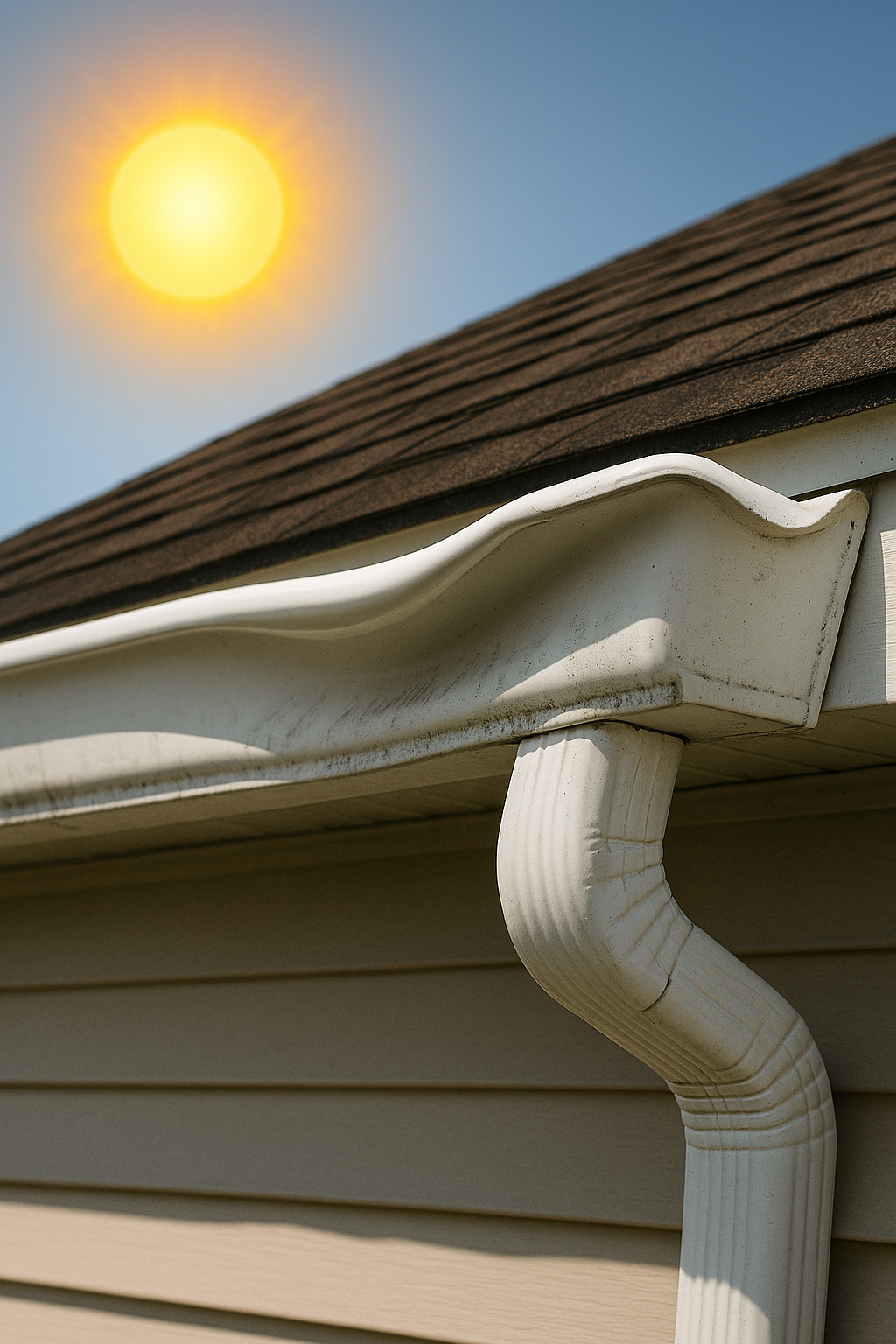
The Real Cost of Choosing Vinyl
At \$3–6 per foot, vinyl looks cheap—until you consider the replacement cycle. If a vinyl gutter system needs replacement every 12–15 years[10] and an aluminum system lasts 25–30 years[24], you’ll likely spend more on materials and labor over the life of your home. Plus, leaks and overflows from weak vinyl seams can lead to foundation repairs ( \$5,000–\$50,000)[25], roof and fascia damage, or even flooded basements[26].
Better Alternatives for East Bay Homes
Aluminum – the sweet spot
Aluminum remains the most popular gutter material for good reason. It’s rust‑resistant, lightweight, and can be formed into seamless runs[27]. High‑grade aluminum gutters last 20–30 years[24] and cost \$6–12 per foot[28]—only slightly more than vinyl but far more durable. They can be painted to match any trim and withstand the East Bay’s hot summers and wet winters.
Copper or steel for longevity and fire resistance
For homeowners who want a lifetime solution, copper gutters last 50–100+ years and develop a beautiful patina[29]. Steel gutters handle heavy rainfall and resist impact[30]. Both are non‑combustible and recommended in wildfire zones[31][32]. While copper costs more up front (\$15–25 per foot[33]), it pays off through longevity and peace of mind.
Seamless and covered systems
No matter which metal you choose, insist on seamless gutters to eliminate leak points. Add a gutter guard to keep East Bay leaf litter out, and ensure proper grading and downspout placement to handle winter storms. Metal gutter covers are also recommended for wildfire protection[20].
Final Thoughts – Choose Aluminum over Vinyl Gutters
At Global Gutter Systems, we believe your rainwater management system should be a long‑term investment, not a temporary fix. Vinyl gutters may save a few dollars today, but the hidden costs of frequent replacements, leaks, fire risk, and environmental impact make them a poor choice for East Bay homeowners. Investing in high‑quality aluminum or copper gutters protects your home, preserves your curb appeal and reduces the chance of costly repairs down the road.
Ready to upgrade? Our team designs and installs
custom, seamless metal gutter systems built to handle Northern California’s unique climate.
Contact us today for a free consultation and let us help you protect your most valuable asset.
Get a Free Quote Today!
Contact Us
Follow us online for updates



